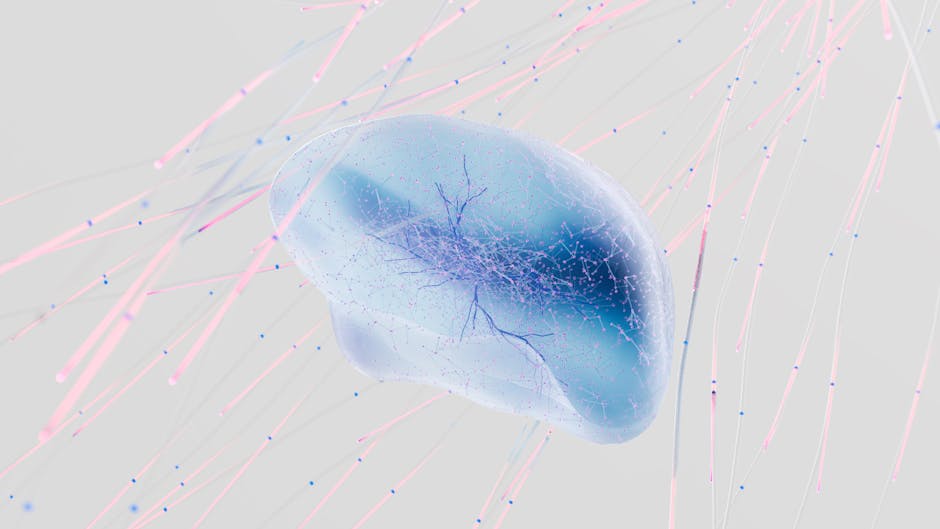Machine Learning for Sequencing: Accelerate Genomic Discoveries
Think about how many letters exist in the English alphabet, just 26, right? Now imagine trying to decode a "language" where there are billions of letters, and each one carries instructions for building and maintaining life. That’s essentially what scientists face when working with DNA, the instruction manual of life.

Understanding and sequencing these instructions has been a monumental challenge, but machine learning (ML) is making it not only possible but faster and more precise than ever before.
Why DNA Sequencing Needs Machine Learning
DNA sequencing isn’t new. For decades, researchers have worked tirelessly to map out the human genome and understand its implications. But here’s the catch: the data is massive. Sequencing just one human genome generates around 200 gigabytes of raw data. Multiply that by thousands or millions of samples in studies across health, agriculture, and environmental sciences, and you quickly hit an
Machine learning enters the scene here as the ultimate problem-solver. Unlike traditional computational methods that require step-by-step programming, ML algorithms learn patterns from data and make predictions based on what they’ve learned. Think of it like teaching your smartphone to recognize your face: after seeing you from different angles and lighting conditions, it knows how to identify you without needing explicit instructions for every situation.
In genomics, ML can help identify genes linked to diseases, predict how genetic variations affect drug responses, and even track mutations in viruses like COVID-19. All this happens in a fraction of the time it would take humans using traditional analysis techniques.
Applications That Are Changing Genomics
The use of ML in sequencing isn’t limited to one corner of science; its impact spans across fields. Here are some standout examples:
- Cancer Research: Imagine trying to find a single typo in a 3-billion-character book. That’s what cancer researchers face when looking for mutations that cause tumors. ML models can scan genomes at lightning speed to locate these mutations and even predict which ones are likely to trigger cancer. This helps in developing targeted therapies that work for individual patients.
- Rare Disease Diagnosis: For families with children suffering from unexplained conditions, getting a diagnosis can take years, or never happen at all. ML algorithms can sift through genetic data to pinpoint rare variants that might be causing symptoms, dramatically reducing diagnostic timeframes.
- Agriculture: It’s not just human health that benefits. Researchers use sequencing and ML to improve crop yields by identifying genetic traits responsible for drought tolerance or disease resistance. This is particularly valuable as global food demands grow.
- Public Health: During the COVID-19 pandemic, scientists used ML tools to track how the virus mutated over time, helping them understand its spread and improve vaccines.
The Technology Behind It
You might be wondering: what makes ML so good at handling genomic data? The answer lies in its ability to process enormous datasets efficiently while adapting to new information without being explicitly reprogrammed. A few key technologies stand out:
- Neural Networks: Inspired by how human brains work, these systems are excellent at recognizing patterns in data, whether it’s distinguishing faces in photos or finding disease markers in DNA sequences.
- Support Vector Machines (SVMs): These are like mathematical sorting machines. They separate complex data into categories, Distinguishing healthy genetic patterns from those linked to illness.
- Natural Language Processing (NLP): Typically used for translating languages or analyzing text sentiment online, NLP is also applied to DNA sequencing because genetic data often behaves like a "language" with its own grammar and syntax.
- Unsupervised Learning: While some algorithms need labeled data (e.g., “this sequence causes diabetes”), unsupervised models can find patterns without guidance, perfect for uncovering unknown relationships within genomes.
The Challenges Ahead
While ML has already transformed genomics in many ways, challenges remain. One major hurdle is bias within datasets. If training data mostly comes from certain populations (say individuals of European descent) the model may perform poorly when applied to people from other backgrounds. This issue highlights the importance of creating diverse datasets representative of all populations.
Another challenge involves the interpretation of results. Just because an algorithm identifies a mutation doesn’t automatically mean it’s harmful or significant. Scientists must work carefully to validate ML findings in labs and clinical settings before applying them broadly.
And let’s not forget privacy concerns. With personal genetic information becoming increasingly digitized, safeguarding this sensitive data against misuse or unauthorized access is critical.
A New Era for Genomic Discovery
The fusion of machine learning with DNA sequencing offers unparalleled opportunities for discovery, many of which were unimaginable just a decade ago. Whether accelerating cancer research or solving mysteries behind rare diseases, these technologies empower researchers to ask bigger questions and find answers faster than ever before.
If you’d like a deeper dive into how machine learning is shaping genomics today, consider exploring resources such as NCBI, which provides comprehensive scientific literature on the subject.
The road ahead may be complex, but it’s clear that machine learning holds immense potential for unlocking the secrets buried deep within our DNA and turning those insights into life-changing advances for humanity.
